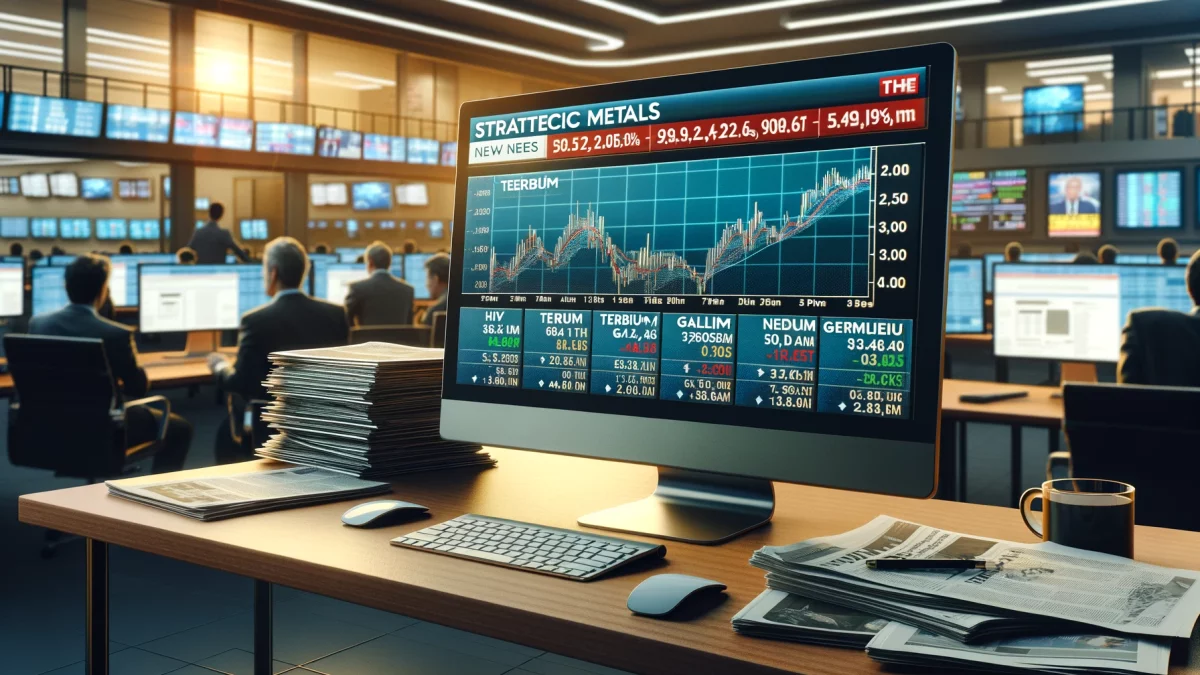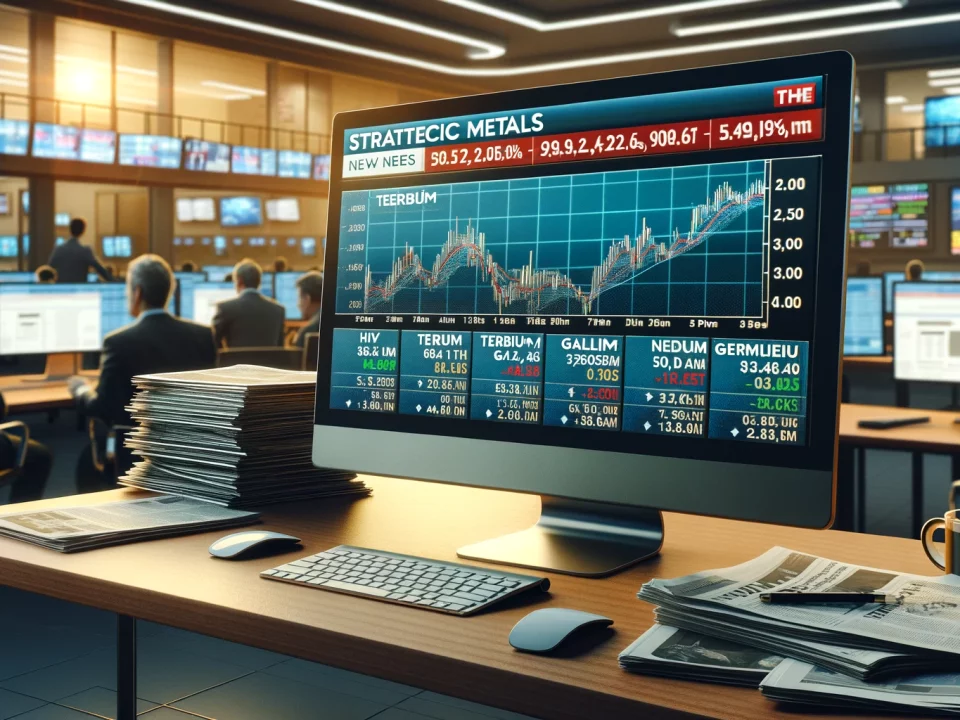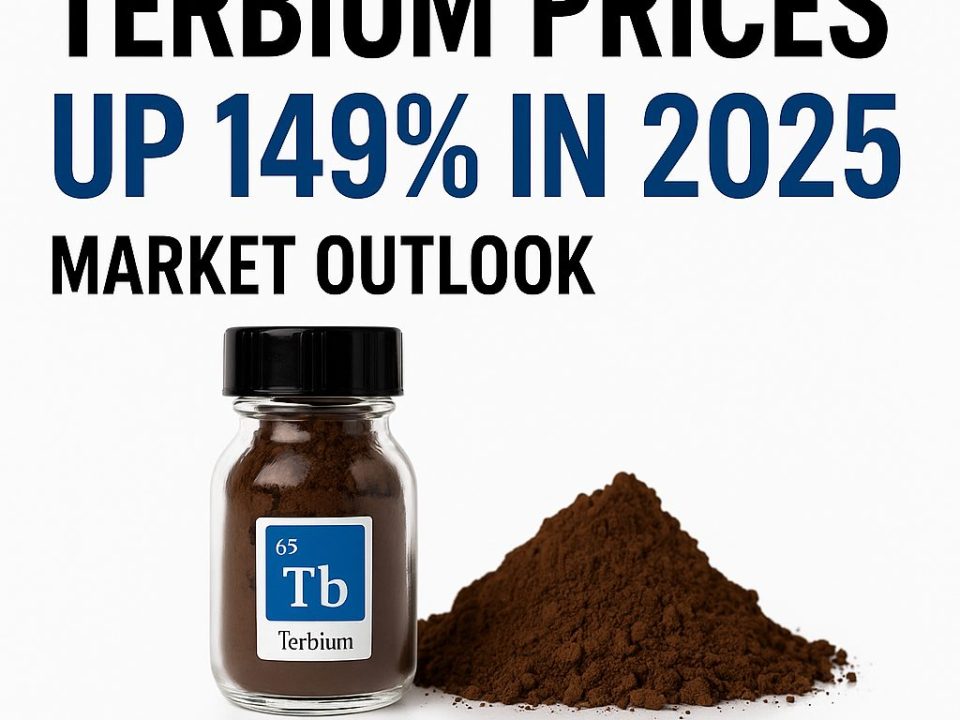
Praseodymium Outlook 2026–2030: Demand Rising, Supply Tight
September 30, 2025
Weekly News Review October 6 – October 12 2025
October 12, 2025This week was marked by strategic moves across the rare earth and metals sector. USA Rare Earth announced a significant acquisition in the UK to strengthen its mine-to-magnet ambitions, while China outlined a plan to expand its nonferrous metals industry. At the same time, new U.S. funding is being invested in a rare earth project in Malawi.
All this and more from the newsroom at rawmaterials.net
CANADIAN MINING COMPANY SECURES US FUNDING FOR MALAWI RARE EARTH PROJECT:
Canadian mining company Mkango Resources has secured $4.6 million in funding from the U.S. International Development Finance Corporation (DFC) to advance its Songwe Hill rare earth project in Malawi. The budget for its subsidiary Lancaster Exploration Limited will be used to support front-end engineering design (FEED) and value engineering studies, key steps in preparing the project for construction and financing. Under the terms of the agreement, Mkango will match the DFC contribution with its own investment over the next 18 months.
The initiative is part of the DFC’s Project Development strategy under the U.S. BUILD Act, which aims to strengthen high-impact projects in other markets and enhance their readiness for future investment.
Besides the U.S., the European Union has also voiced its interest in the project. In June, the bloc added Songwe Hill to its list of strategic projects under the Critical Raw Materials Act. Selected projects can benefit from faster permitting and improved access to funding.
The announcement follows Mkango’s July mining agreement with the Government of Malawi for the Songwe Hill project, under which the company secured substantial support from the government to develop the project, including the provision of necessary infrastructure and reduced taxes.
In addition to Songwe Hill, Mkango is advancing multiple other exploration projects in Malawi and owns the Pulawy rare earth separation project in Poland, positioning the company across both upstream mining and downstream processing of rare earths. Additionally, the company is also involved in recycling rare earth magnets in projects across the UK.
CHINA UNVEILS PLANS TO STRENGTHEN NONFERROUS METALS SECTOR:
On Sunday, China unveiled a new work plan aimed at strengthening its domestic nonferrous metals industry over the next two years. The initiative aims for an annual value-added growth rate of approximately 5% and an average yearly output increase of 1.5% across the country’s top ten nonferrous metals.
The top ten nonferrous commodities under the plan are: copper, aluminum, lead, zinc, nickel, tin, antimony, mercury, magnesium, and titanium. In addition, it highlights strategic metals such as rare earth elements, gallium, and tungsten, aiming for breakthroughs in high-end materials and stricter efficiency standards for processing.
The plan also sets a target of producing over 20 million tons of recycled metals, reflecting Beijing’s growing emphasis on resource efficiency and green transformation.
To achieve these goals, the program employs a multi-pronged strategy: strengthening resource security through new mineral prospecting, expanding recycling and renewable resource bases for metals and batteries, promoting technological innovation, and fostering international cooperation through overseas projects, foreign investment, and Belt and Road Initiative projects.
USA RARE EARTH ACQUIRES BRITISH RARE EARTH ALLOY EXPERTISE:
USA Rare Earth (USAR) is pursuing its goal of building a fully vertically integrated mine-to-magnet supply chain for rare earths. The company, headquartered in Stillwater, Oklahoma, is moving closer to that ambition. As announced on Monday, USAR will acquire UK-based producer Less Common Metals (LCM) for $100 million in cash plus 6.74 million USAR common shares.
LCM is regarded as the only manufacturer outside of China capable of producing both light and heavy rare-earth permanent magnet alloys on a large scale. The company can also process recycled materials, further strengthening its strategic role in global supply chains.
“The midstream stage of metal production forms the backbone of supply chains worldwide,” said USAR Board Member Michael Blitzer. LCM’s technology is expected to be integrated into USAR’s production site in Stillwater, while existing capacities in the UK and across Europe are also slated for expansion. In May, LCM announced plans to build a new plant in France, with an estimated investment of $130 million.
Earlier this year, USAR made headlines with the successful production of a sample of dysprosium oxide. China currently holds a near-monopoly on this heavy rare earth element. Since April, it has imposed export restrictions on dysprosium and other rare earths, significantly tightening the global supply.
GALLIUM: PILOT PLANT FOR GALLIUM RECYCLING LAUNCHED:
Gallium is essential for modern technologies, including radar systems, fast-charging batteries, and LEDs; however, its production is highly concentrated in a few regions. Adding to the challenge, China, the dominant producer, tightly controls exports through strict regulations. Against this backdrop, developing new methods of securing supply has become increasingly urgent.
At the Helmholtz Institute Freiberg for Resource Technology, researchers are developing a process of this nature. This week, they unveiled a pilot plant designed to recover gallium from industrial wastewater. The approach relies on specially engineered molecules that selectively bind to dissolved gallium. Using a patented process, the metal is then released, while the molecules remain intact and ready for reuse.
The pilot facility is located at project partner Freiberger Compound Materials, a semiconductor manufacturer. The company expects the project to deliver insights into the scalability and economic feasibility of the method. Currently, the plant processes 100 liters of production wastewater, with plans to increase capacity to 2,000 liters in the near future.
UNITED STATES: PENTAGON AGAIN INVESTS IN US SUPPLY CHAIN –
The U.S. Department of Defense is continuing its push to strengthen the domestic supply chain for critical minerals. A subsidiary of Australian mining company Nova Minerals Limited has been awarded more than $43 million in funding (PDF) to produce antimony trisulfide to military specifications. This compound of the technology metal antimony is an essential component in certain types of ammunition and modern weapons systems.
The raw material is slated to come from Estelle, a gold and antimony project in Alaska’s Tintina Gold Belt, where Nova holds a majority stake. The funding is intended to establish a fully integrated supply chain, from mining through refining to finished product. Estelle is still in the development stage, and no production timeline has been disclosed. According to CEO Christopher Gerteisen, the project aims not only to supply the U.S. military but also to serve civilian industries, such as the semiconductor manufacturing sector.
Located approximately 150 kilometers northwest of Anchorage, Estelle lies in a region historically recognized as a significant hub for antimony in North America.
Pentagon Seeks to Revive U.S. Antimony Production:
This is not the Pentagon’s first investment in reviving domestic production of the critical metal. U.S.-based Perpetua Resources has also received multi-million-dollar funding to test whether its Stibnite project in Idaho can deliver antimony trisulfide for defense use. Stibnite, named after the primary source of antimony, has also benefited from the expedited permitting processes introduced by the U.S. government for select raw material projects.
The strategic importance of antimony is further underscored by a recent government agreement with a domestic producer to supply the national stockpile with metal ingots over five years.
The geopolitical backdrop adds urgency: China, the world’s leading supplier, banned exports of antimony to the U.S. at the end of last year. General export restrictions were already imposed in September, citing potential military applications. As a result, China’s antimony exports plummeted sharply in the first half of 2025.
MALAYSIA AND CHINA DISCUSS COOPERATION ON RARE EARTHS:
In March 2024, Malaysia’s government announced plans to upgrade the country’s rare earths sector to capture more value from its natural resources. As part of this strategy, it highlighted potential cooperation with the industry giant China. Shortly thereafter, initial talks between representatives of the two nations took place, with Malaysia hoping for Chinese investment in a domestic rare earth refinery.
One challenge: in late 2023, Beijing imposed an export ban on the technologies needed to process and refine rare earth elements. According to Reuters sources, China might consider an exception in exchange for access to Malaysia’s reserves. Despite having its own deposits, Malaysia’s rare earth mining remains limited. More importantly, the country hosts one of the world’s most significant rare earth refineries outside China.
Operated by the Australian company Lynas, the facility currently processes raw materials imported from Australia but also plans to source rare earths directly from Malaysia, thereby significantly reducing transport routes.
Industry insiders interviewed by Reuters suggest that Beijing may also be seeking to secure these resources before growing competition from Australia gains further ground.
FIGURE OF THE WEEK – 7,162 – That’s how much iron multiplies in value along Mexico’s mining value chain.For comparison, gold increases 20-fold, and copper 186-fold.






